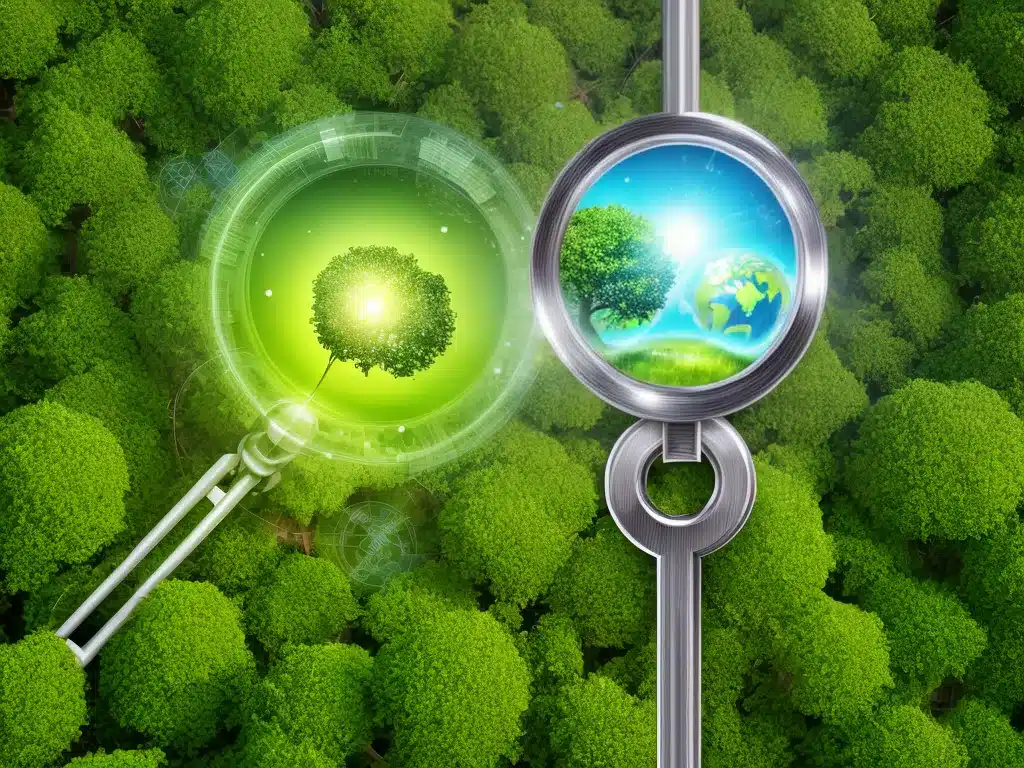
Unlocking IoTs Potential for Sustainability
The Internet of Things (IoT) has immense potential to enable greater sustainability across many industries and applications. As connected devices and sensors become more ubiquitous, companies and governments can leverage the data and insights from IoT to optimize processes, reduce waste, and promote more responsible behaviors. Here is an in-depth look at how IoT can accelerate progress on key sustainability goals:
Reducing Energy Consumption
IoT sensors and analytics provide granular visibility into energy use across facilities, equipment, and devices. This enables:
-
Real-time monitoring of energy consumption to identify waste and anomalies. Smart meters and sensors on devices track energy usage continuously.
-
Optimized energy management through data analysis and automatic adjustments to lighting, HVAC, machinery etc. Building automation systems can respond dynamically to occupancy levels, weather, and usage patterns to conserve energy.
-
Predictive maintenance on equipment and assets to avert failures and inefficiencies. Sensors can indicate when specific parts are wearing out before breakdowns occur.
-
Improved product design based on insights from usage data to maximize energy efficiency across product lifecycles.
Together, these capabilities allow organizations to streamline energy consumption across their operations. According to McKinsey & Company, optimized energy management from IoT could reduce electricity consumption in manufacturing by 10-20%.
Minimizing Material Waste
IoT enables closer tracking of material flows to optimize use and identify waste. Specific applications include:
-
Asset monitoring with IoT sensors to maximize equipment uptime, extend lifespan, and reduce the need for replacement.
-
Fleet tracking to optimize routes, loading, and transport for logistics operations. This reduces mileage and fuel consumption.
-
Predictive ordering based on real-time usage data to prevent overstocking and product obsolescence.
-
Smart packaging with sensors to track condition, temperature, and location of shipped products. This reduces spoilage and loss.
-
Circular supply chain data from IoT systems provides transparency into reuse, recycling, and recovery opportunities.
McKinsey estimates optimizing asset management with IoT could reduce raw material usage across manufacturing by up to 20%.
Encouraging Sustainable Behaviors
IoT devices like smart home systems and wearables provide visibility, reminders, and incentives to promote sustainability:
-
Energy usage notifications provide real-time feedback about consumption habits. This motivates reduced usage.
-
Gamification applies games and rewards to activities like recycling, green commuting, and energy conservation via connected devices and apps.
-
Location-based prompts can remind users of sustainable opportunities like public transit or recycling bins in their immediate vicinity.
-
Peer comparisons through data aggregators inspire competitiveness to outperform neighbors and social contacts on sustainability metrics.
Studies show notifications and gamification can reduce building energy usage by 5-15%. Social encouragement has also been shown to promote conservation behaviors.
Enabling Circular Models
IoT is a pivotal enabler of circular economy business models including repair, reuse, refurbishment, and recycling:
-
Digital passports for assets encoded with materials, components, ownership, and usage history to inform circular processes when recovered.
-
Reverse logistics optimization enabled by IoT asset and container tracking throughout circular supply chains.
-
Remanufacturing and refurbishment supported by data on asset condition, remaining lifespan, and suitability for reuse.
-
Predictive maintenance preserves asset integrity and value, avoiding waste from discarding usable goods.
Circular business models can reduce raw material consumption by 20-50% according to Accenture. IoT capabilities make these models operationally and economically feasible.
Driving Systems Efficiency
IoT contributes to broader systemic efficiency and sustainability across cities, infrastructure, and supply chains:
-
Smart cities orchestrate traffic flows, congestion pricing, waste management, air quality, and energy grids using ubiquitous sensors and optimization algorithms.
-
Infrastructure monitoring from bridges to railways helps operators detect issues proactively, improving safety and availability.
-
Logistics optimization routes traffic to save mileage while keeping goods flowing. Autonomous cargo movement further improves transportation efficiency.
-
Industrial automation synchronizes machinery, inventory, and workflows between locations for maximum speed and minimum waste.
These network effects compound sustainability gains from IoT across entire systems. Singapore’s Intelligent Transport System, for example, has reduced fuel usage by over 10% while cutting commute times by 10-15%.
In summary, IoT is integral to extracting maximum value from our physical assets and resources. The data generated enables transparency, optimization, predictive maintenance, and circularity across devices, facilities, fleets, cities, and global supply chains. While implementation poses cybersecurity and privacy challenges, IoT managed responsibly provides the visibility required to transition toward more sustainable futures.












